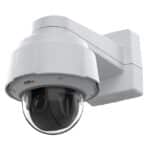
Surveillance System Buying Guide
In this surveillance system buying guide we will summarize the difference between two types of recorders, Digital Video Recorders and Network Video recorders. Moreover, we will discuss the amount of cameras needed, video monitoring, best practices, surveillance system benefits and features that are available. Naturally, we are going to provide you with some recommendations and insights regarding surveillance systems, so that you can make an informed decision on which surveillance system will best suit your needs.
Which Surveillance Recorder Should I Buy?
Digital Video Recorder
A Digital Video Recorder (DVR) converts analogue footage to digital format. The camera sends the signal through a coaxial cable to the DVR, then the recorder uses an AD encoder to process the raw data to prepare it for storage. Furthermore, the coaxial cable does not carry power, so a BNC connection is preferred for these types of systems. On another note, if you are looking to record audio from your camera, a separate cable will be required because coaxial cables are not natively capable of transmitting audio signals. In conclusion, if you are dealing with existing BNC connections and just want to upgrade your cameras, then we would suggest you purchase a DVR with compatible cameras. But for new installations we are suggesting Network Video Recorders to our clients.
Network Video Recorder
A Network Video Recorder (NVR) transmits digital signal using an single ethernet cable. This type of surveillance system encodes and processes data at the camera. After doing so, it transmits the digital signal to the NVR to be stored and viewed. You can even set it up to be viewed remotely. Most of NVR systems on the market use a technology called Power Over Ethernet (PoE) to transmit data and power on the same cable. However, make sure that your cameras are PoE capable and that your NVR has PoE built in, not all systems have this feature. For example, if the cameras are not PoE capable, then a separate power cable to the camera will be required. By the same token, if the NVR does not have built-in PoE, then you will require a PoE switch to power the cameras.
Now that you have a good understanding of the types of systems that are available, lets take a look at what features are being offered and what Altris Security recommends.
Do I Need A Surveillance System?
According to Stats Canada in 2022 there were 963 break and enters per 100,000 people. In Canada, we have approximately 38 million people, so that translates to almost 400,000 break and enters per year. In contrast, studies show that having a reliable surveillance system deters crime by 50% or more. If you wish to check out the statistics for your region, follow the link here. It is always best to secure your home or business with a full security solution, an access control system and monitored alarm system, in addition to a surveillance system. A full security solution secures your entire property and gives you the peace of mind you deserve, knowing that someone will respond in the case of an emergency.
How Many Cameras Do I Need?
This is an important question to answer, because it will let you know how many ports you will need in the system that you will be purchasing. The first step is to make a list of the areas that you would like to monitor/view. It is best practice to have the camera views overlap to prevent blind spots.
Below is a list of a few common residential and commercial surveillance camera locations. Please note, commercial installations for Canadian businesses are required to follow PIPEDA and other municipal legislation.
If you have any questions regarding surveillance systems or would like to hire Altris Security to implement a Security Solution, please follow the link to speak to our Security Team.
Residential
- Front Porch
- Driveway
- Sides of House
- Front of House
- Backyard
- Garage
- Other Entrances/Exits
- Rooms with Safes
Commercial
- All Entrances
- All Exits
- Parking Lot
- Customer Areas
- Employee Areas
- Cash Registers/Safes
Do I Need Monitoring?
The purpose of Surveillance Monitoring service is to ensure safety. The monitoring service will monitor your footage and in the case of an emergency, they will dispatch a response team or emergency services to your property. This type of service is recommended on all installations. The cost for Surveillance monitoring varies on provider, fees and/or subscriptions range between $20-$100 per month. However, if you decide to not sign up for a video monitoring service, you should at least purchase a system that offers a secure phone application to view your cameras with a live notifications/alert system.
What is DORI?
DORI is an surveillance standard that defines how much detail (pixels per meter) the camera needs to obtain Detection, Observation, Recognition, Identification. The DORI result is usually measured in meters or kilometers.
Detection (25 PPM) – Able to detect if a person or vehicle is present
Observation (62 PPM) – Able to give details of an individual, such as clothing
Recognition (125 PPM) – Able to with a high degree of confidence whether the person shown is the same as someone seen before
Identification (250 PPM) – Able to identify an individual beyond a reasonable doubt
In short, in most cases you will likely want to be able to identify individuals at a specific distance. Some make sure to check for the DORI results to achieve your desired results. Most camera manufacturers display the minimum DORI results on their datasheets.
Security Recommendations
- 2 Factor Authentication
- AES 256 Bit Encryption
- NDAA compliant surveillance cameras and NVR’s
- Install a Next-Generation Firewall
- Put your surveillance system on a secure and separate hidden network
- Avoid Wireless systems whenever possible
- Recommended to search for recent data breaches and vulnerabilities
Surveillance Technology Trends For 2023
- Video Analytics – help with identifying patterns or trends for security
- Artificial Intelligence – analyze audio and images to identify humans, vehicle, objects and events
- Cloud Integration – allows you to save your footage to the cloud
- Machine Learning – trains the system using pre stored data to get insights on safety, operations and security
- IoT System Integration – sending IoT and surveillance data for operational and security needs
- 4K Technology – offers a higher image resolution and better clarity when zoomed
Video Quality
- 1080P or higher resolution
- A field view of at least 130 degrees – (for doorbell cameras 160 degrees)
- Minimum 30 frames per second
- Night vision range at least 30ft
Storage
- Storage depends on how long you would like to hold footage for (we recommend at least 30 days)
- Whether you will be recording constantly or only during a motion or triggered event
- We recommend at least 1TB of storage per camera
Scalability
- Make sure you are purchasing an NVR that is easily scalable, meaning multiple units can connected together. Furthermore, it is also recommended to purchase an NVR with more ethernet ports than you require, in the event that you may add additional cameras in the future.
Power Source For Camera
- Ethernet cable connected to PoE Switch or NVR with PoE
- BNC connection to DVR or other power source
Features
- Alerts/Notifcations (Must Have)
- Weatherproof (Must Have)
- Motion detection (Must Have)
- HDR (High Dynamic Range)
- Remote Access Application
- Home Automation Integration
- Geofencing
- Activity Zones
- 2-Way Audio
- Night Vision (Infrared) (Must Have)
- PTZ (Pan-tilt-zoom)
- Vandal Resistant
- License Plate Recognition
- Integration with Access Control and/or Alarm System
- Automatic Network Recovery
- Intrusion Detection
- Thermal
What IP Rating Should I Get?
The IP (Ingress Protection) Rating is referring to how weatherproof the enclosure is. The rating is given in an abbreviation, the first number indicates the protection against objects penetrating internal parts, the second number indicates the protection against liquids. We recommend IP67 or above.

Types of Cameras
Flood Light Camera
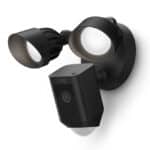
Bullet Camera

Dome Camera
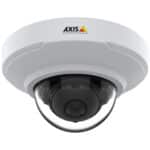
Doorbell Camera
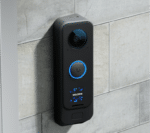
Turret Camera
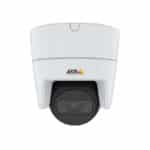
C-Mount Camera
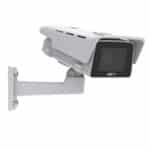
PTZ Camera
